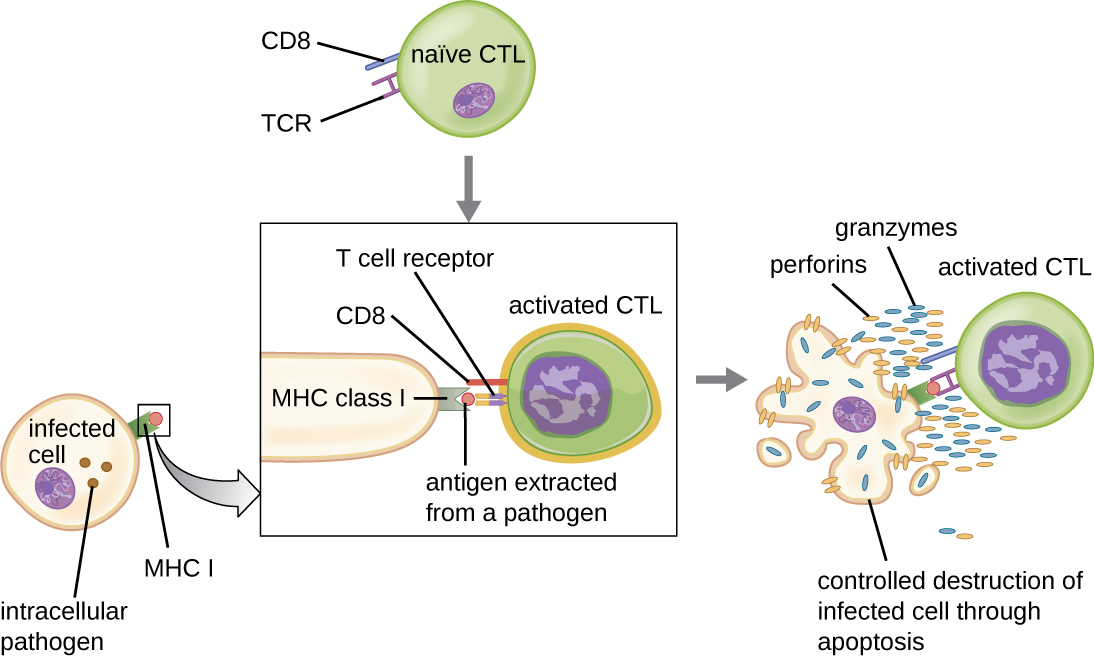| << Chapter < Page | Chapter >> Page > |
As noted, proliferation and differentiation of cytotoxic T cells is also stimulated by cytokines secreted from T H 1 cells activated by the same foreign epitope. The co-stimulation that comes from these T H 1 cells is provided by secreted cytokines. Although it is possible for activation of cytotoxic T cells to occur without stimulation from T H 1 cells, the activation is not as effective or long-lasting.
Once activated, cytotoxic T cells serve as the effector cells of cellular immunity, recognizing and kill cells infected with intracellular pathogens through a mechanism very similar to that of NK cells . However, whereas NK cells recognize nonspecific signals of cell stress or abnormality, cytotoxic T cells recognize infected cells through antigen presentation of pathogen-specific epitopes associated with MHC I . Once an infected cell is recognized, the TCR of the cytotoxic T cell binds to the epitope and releases perforin and granzymes that destroy the infected cell ( [link] ). Perforin is a protein that creates pores in the target cell, and granzymes are proteases that enter the pores and induce apoptosis . This mechanism of programmed cell death is a controlled and efficient means of destroying and removing infected cells without releasing the pathogens inside to infect neighboring cells, as might occur if the infected cells were simply lysed.

In this video , you can see a cytotoxic T cell inducing apoptosis in a target cell.
When T cell activation is controlled and regulated, the result is a protective response that is effective in combating infections. However, if T cell activation is unregulated and excessive, the result can be a life-threatening. Certain bacterial and viral pathogens produce toxins known as superantigens (see Virulence Factors of Bacterial and Viral Pathogens ) that can trigger such an unregulated response. Known bacterial superantigens include toxic shock syndrome toxin (TSST) , staphylococcal enterotoxins , streptococcal pyrogenic toxins , streptococcal superantigen , and the streptococcal mitogenic exotoxin . Viruses known to produce superantigens include Epstein-Barr virus (human herpesvirus 4), cytomegalovirus (human herpesvirus 5), and others.
The mechanism of T cell activation by superantigens involves their simultaneous binding to MHC II molecules of APCs and the variable region of the TCR β chain. This binding occurs outside of the antigen-binding cleft of MHC II, so the superantigen will bridge together and activate MHC II and TCR without specific foreign epitope recognition ( [link] ). The result is an excessive, uncontrolled release of cytokines, often called a cytokine storm , which stimulates an excessive inflammatory response. This can lead to a dangerous decrease in blood pressure, shock, multi-organ failure, and potentially, death.

Notification Switch
Would you like to follow the 'Microbiology' conversation and receive update notifications?